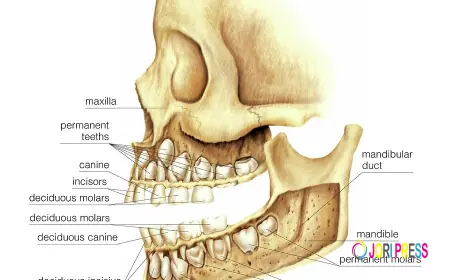Does Ear Reshaping Require Extensive Downtime?
Upset about the look of your droopy or big ears? Don’t worry and reach Ear Reshaping in Islamabad, Rawalpindi & Pakistan to attain the best and most effective outcome.

Cosmetic procedures have become increasingly popular as people seek ways to enhance their self-confidence and appearance. Among these, ear reshaping surgery, also known as otoplasty, is a common solution for individuals who feel self-conscious about the size, shape, or protrusion of their ears. Many patients considering this procedure often ask whether the recovery process is long and difficult. To clarify these concerns, this article will explore the details of ear reshaping, recovery expectations, and whether the downtime is truly extensive. For those looking for professional and safe treatment, Ear Reshaping in Islamabad has become a trusted option.
What is Ear Reshaping Surgery?
Ear reshaping, or otoplasty, is a cosmetic procedure designed to improve the appearance of the ears. It may involve reducing overly large ears, pinning ears closer to the head, or reshaping irregular ear contours. The surgery is performed under local or general anesthesia, depending on the patient’s age and preference. For adults, local anesthesia is often sufficient, while children may require general anesthesia.
The Importance of Downtime in Cosmetic Procedures
One of the most common questions patients have before undergoing any cosmetic procedure is about downtime. "How much time will I need to recover?" is often a deciding factor for people with busy personal or professional schedules. Fortunately, ear reshaping is not considered a high-risk surgery and generally requires less downtime compared to many other cosmetic surgeries, such as facelifts or rhinoplasty.
Recovery Timeline After Ear Reshaping
Immediately After Surgery
Patients are usually able to go home the same day after the procedure. A bandage is placed around the ears to protect the new shape and support healing. Mild discomfort, swelling, and redness are common in the first few days, but these symptoms are manageable with prescribed medications.
First Week
During the first week, patients are advised to rest and avoid strenuous activities. The protective bandage is typically worn for a few days and then replaced with a lighter dressing or headband that holds the ears in place. Most people are able to resume light daily activities within 5 to 7 days.
Two to Three Weeks
By the second and third weeks, swelling and bruising begin to subside significantly. Patients can usually return to school or work at this stage, though they may need to wear the headband at night to protect the ears while sleeping. It’s important to avoid contact sports or activities that might bend or injure the ears.
Four to Six Weeks
Within a month, the majority of healing has taken place. Patients can comfortably return to their normal routines, including exercise, while still being mindful of protecting the ears.
Full Recovery
Most patients achieve complete recovery within 6 to 8 weeks. The final results are visible once all swelling has resolved and the ears have settled into their new position.
Does Ear Reshaping Require Extensive Downtime?
The simple answer is no. Ear reshaping does not require extensive downtime. Compared to many surgical procedures, recovery is relatively quick and straightforward. Most patients return to work or school within a week and resume normal physical activities within a month. However, "downtime" can vary from person to person depending on factors such as age, overall health, the complexity of the surgery, and adherence to post-operative care instructions.
Tips for a Smooth Recovery
To ensure a quick and smooth healing process, patients should follow these guidelines:
-
Follow the surgeon’s instructions carefully regarding wound care, medications, and activity restrictions.
-
Wear the headband or dressing as advised to protect the ears and maintain the new shape.
-
Avoid strenuous activities that may cause trauma to the ears during the first few weeks.
-
Sleep on your back to avoid putting pressure on the ears.
-
Attend follow-up appointments to allow the surgeon to monitor progress and ensure proper healing.
By carefully following medical advice, patients can minimize downtime and achieve the best possible results.
Benefits Beyond Cosmetic Appearance
While many people pursue ear reshaping for cosmetic reasons, the procedure often delivers emotional and psychological benefits as well. Individuals who once felt embarrassed or teased about their ears frequently experience improved self-esteem and confidence after the surgery. For children, early correction can prevent bullying and foster a healthier self-image during their formative years.
Why Choose Ear Reshaping in Islamabad?
In Islamabad, cosmetic surgery clinics are known for their professionalism, experienced surgeons, and advanced medical facilities. Patients have access to internationally trained specialists who use modern techniques to ensure safe and natural-looking results. Moreover, clinics in the city prioritize patient care and provide comprehensive post-operative support to make the recovery process smooth and stress-free.
Final Thoughts
Ear reshaping, or otoplasty, is a safe and effective procedure that does not demand extensive downtime. Most patients recover quickly and are able to return to their normal routines within days to weeks, depending on the stage of healing. With proper care and guidance from a qualified surgeon, the results are long-lasting and life-changing. For those considering this procedure, Ear Reshaping in Islamabad offers a reliable choice with excellent outcomes.
What's Your Reaction?
 Like
0
Like
0
 Dislike
0
Dislike
0
 Love
0
Love
0
 Funny
0
Funny
0
 Angry
0
Angry
0
 Sad
0
Sad
0
 Wow
0
Wow
0



















































